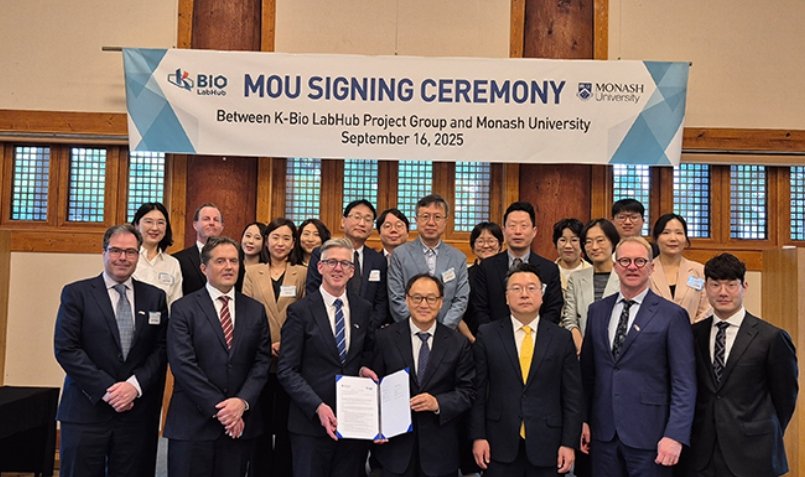
David Irecki Director, Solution Consulting, Asia Pacific and Japan, Boomi
Growing trends in healthcare digitalization are continuously transforming execution and practices in the hospital industry. A unified environment enables the integration and standardization of patient data, resources, and processes, thereby enhancing patient care models.
In addition, numerous healthcare wearable devices collect individual patient data. However, study statistics indicate that more than 60% of data within any organization remains unused for analytics. That’s a lost opportunity for improving care and gaining market advantage. Harnessing these medical insights is essential to monitor the market advantages of wearable devices in order to optimize the device industry.
An integrated patient information system would allow authorized health and social care professionals to have access to the patient’s clinical information (for example, laboratory results, medications, allergies, and clinical notes) from multiple providers. It could also allow the patient to view the record and where appropriate add any self-monitoring information. Many benefits and efficiencies can flow from information being recorded, in contact with health and care services, and shared securely between those providing care.
Improving patient outcomes and reducing costs requires integrating systems, teams, and processes. Analytics powered by IoT data and data from the edge is integrated to improve operational efficiency and patient support. Boomi, the globle data integration platform is refining healthcare data by creating a value-based healthcare model through its interoperability integration platforms. David Irecki, Director for Boomi' Solution Consulting in the Asia Pacific and Japan shares more about the impact of intelligent integrated automation systems in present healthcare ecosystem.
For the year ahead, how healthcare providers respond following the pandemic-accelerated emphasis on digitalising will be crucial. For context, McKinsey estimates that digital health is already providing services to billions of people in Asia, adding that it will create approximately $100 billion in value for the region through 2025.
However, the same report states that providers across Asia need to account for customer centricity in the provision of their services. Much like how a retailer must focus on the customer journey, so too should healthcare providers do the same with each touchpoint patients interact with.
However, factors such as rising costs for providers, strained resources and ageing populations can complicate attempts to swiftly pivot to an ecosystem that puts the customer first. Ultimately, healthcare is an omni-channel experience, and for Asia's continued digital health development, services must be grounded in an orchestrated ecosystem.
Therefore, it is imperative that the healthcare sector is equipped with smart infrastructure and digital ecosystems that prime them for first-mover advantage, edge and new disruptive offerings.
A side effect of the accelerated digitisation in recent years, has been the freeing of IT teams previously burdened with brittle and outdated systems. As a result, IT is increasingly equipped with the authority to evaluate new technologies, including low-code platforms, which can accelerate modernisation and serve as a key differentiator. By eliminating the need to manage legacy infrastructure and improving usability of their various systems, healthcare providers position themselves to be more agile; essentially driving digitalisation without the pitfalls such as data sprawl and fragmentation.
By using a cloud-based, low-code integration platform to tie together the exchange of data among applications and processes, organisations create a state-of-the-art digital healthcare information system that is more secure and compliant.
Providers will then see a radical improvement of the quality of their data, while connecting core processes and workflows. As a result, not only will visibility and control of patient care improve, the patient-care lifecycle will also be more transparent. Simultaneously, data sharing will be more efficient and offer the basis to develop custom applications, while administrative tasks can be automated to remove the burden on staff.
Juniper Aged Care, a healthcare institution in Australia, is a shining example of this. Due to its legacy infrastructure driving up maintenance costs and taking time away from staff to care for patients, the provider sought an IT refresh.
While the first step was to move to the cloud, it needed to be – and was – supplemented by integrating business-critical applications. As a result, manual processes could be automated for the benefit of staff and the business, while compliance and governance were also facilitated.
Organisations need a more agile approach to treating patients, which requires adopting modern, cloud-based technology. Through cloud-native technologies healthcare providers can access information instantly on patients – wherever those patients might be. It essentially changes the game; as healthcare costs rise, it has become increasingly expensive for people to come into the hospital or a doctor’s office, but with cloud technology, they won’t have to.
With a cloud-native application development service, providers gain critical digital connectedness, which eliminates a major chokepoint in the digital transformation journey. As a result, healthcare providers can remove manual complexity from processes, rapidly build and deploy responsive digital health applications without the worry of technical debt, as well as enable cross-functional collaboration that significantly improves user experience which all amounts to distinctive and seamless customer journeys.
Taking that step to use a cloud-based integration platform to manage data, enables healthcare organisations to harness value for specific business objectives.
By removing IT friction and fragmented processes, providers can overcome silos. This frees data and gives providers a better view of the customer, and drives innovation and enhanced offerings. Essentially, this allows the organisation to invest in their patients' health and wellbeing, giving them the best possible care.
Simply put, with all the organisation’s critical data in a single platform, providers gain consistent data that empowers data-driven practices. At the same time, with 360-degree visibility across their ecosystem, providers can improve processes to drive productivity across the business and devote more resources to patient care.
Hospitals and clinics can explore using data in mobile technology and new processes that are tied to healthcare IT systems to create new types of patient experiences. They can meet patients where they live and they can monitor patient health and deliver recommendations in real time, addressing minor issues before they become major ones.
People want healthcare to meet them where they are, and when they do visit a physical facility, they want a one-stop experience – to see a physician, get tests performed, and receive prescriptions, all in one go. When medical personnel are able to eliminate manual and time-consuming tasks, they can focus more on patient care.
Moderna Inc., for instance, used a data hub to ensure data was consistent and secure when onboarding. Through this, they were able to eliminate hundreds of hours in manual onboarding, created superior end-user experiences that drove long-term retention, and minimised errors as well as risk with accurate and consistent personal data.
Patient-centricity relies heavily on how data is collected and utilised for their wellbeing.
For providers, it is imperative that carers can spend more time tending to patients rather than being bogged down with time-consuming administrative tasks that generate no real value for the organisation.
When data is no longer held back by isolated systems, they can run powerful analytics or deliver previously hidden insight. With consistent data in a central source, organisations can leverage the full power of emerging technologies – like smart devices and AI – to ensure patients receive the care they need, when they need it. It is data that plays the pivotal role in personalising the experience for patients, which enables carers and staff to immediately tend to their specific needs.
Ultimately, the key takeaways should be that the value of data rests on integrating the technology stack, so that on-premises solutions and cloud-based ones, can both be leveraged to their full potential.
Hithaishi Bhaskar
hithaishi.cb@mmactiv.com




